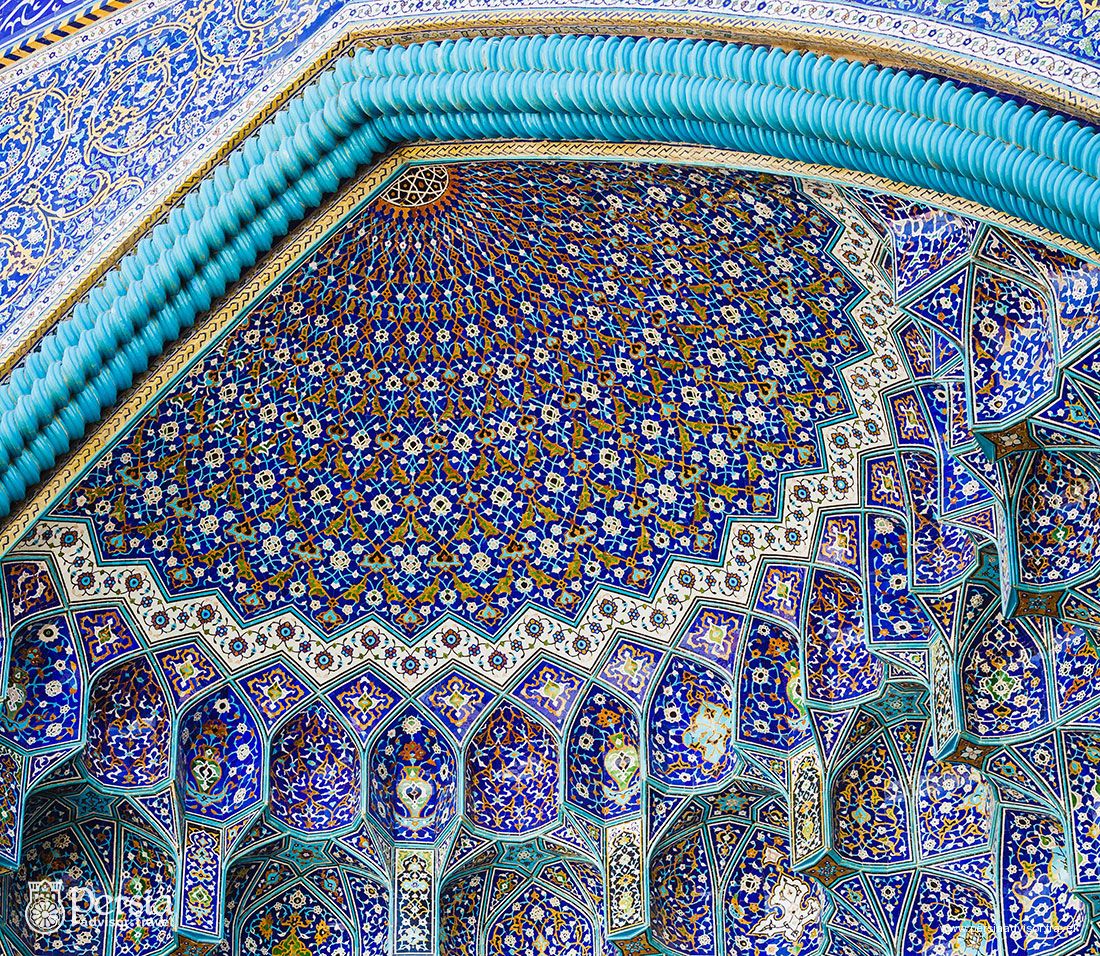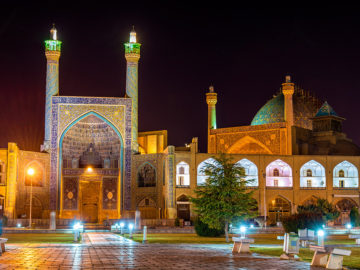
The Sheikh Lotfollah Mosque is located on the eastern side of the historical Naqsh-e Jahan Square. Shah Abbas I of the Safavid Dynasty ordered the construction of this mosque in 1602 and was completed in 1619 and he named it after a clergyman of Lebanese nationality called Sheikh Lotfollah.
He was one of the biggest clergymen during the Safavid Dynasty (1501-1736) who moved to Iran following his invitation by Shah Abbas to be supported in Shiite faith. Sheikh was later had the honor of supervising the royal Sheikh Lotfollah Mosque and praying there as an Imam that was used both as a mosque and harem for the king.

From an architectural viewpoint, the mosque is quite simple; however, it is decorated with majestic tile working. The mosque has no four-Iwan plan (while this plan was common during the Safavid Dynasty), vaulted gallery, courtyard, and more importantly, no minaret as one of the essential parts of the Islamic mosques. This is because the mosque was built as a private mosque for the king, leading to the deletion of some essential parts of public mosques.
The whole mosque’s area accounts for 1,324 square meters and its dome is 32 meters in height and 12 meters in diameter. The mosque has a praying hall with 16 lattice windows on the top of the walls through which rays of the sun in the forms of the lattices emit inside the hall. The interwoven patterns of lights and shadows are among the attractions of this hall added to its beautiful tile works.

This praying hall located under the dome of the mosque is accessible through a corridor that starts from the portal entrance of the structure. The corridor has two lattice windows to provide enough light. The walls and dados of the mosque are decorated with mosaic tiles and enameled bricks that consist of arabesques and floral designs. The Mihrab of the Sheikh Lotfollah Mosque is a kind of high niche Mihrab has a portal decorated with Muqarnas (a kind of Islamic vaulted decorations particularly for entrance portals) and tilework.

One of the unique features of this mosque refers to its 45-degree rotation on the north-south axis through an entrance corridor in order to adjust the direction of the mosque towards the kiblah. The architect of the mosque was Mohammad Reza Isfahani and its inscriptions were made by calligrapher Alireza Abbasi with white tiles on a blue background.
He is in fact the most famous calligrapher during the reign of Shah Abbas but Bagher Banna was another famous calligrapher of the time, who contributed significantly to the inscriptions of this mosque as well.

